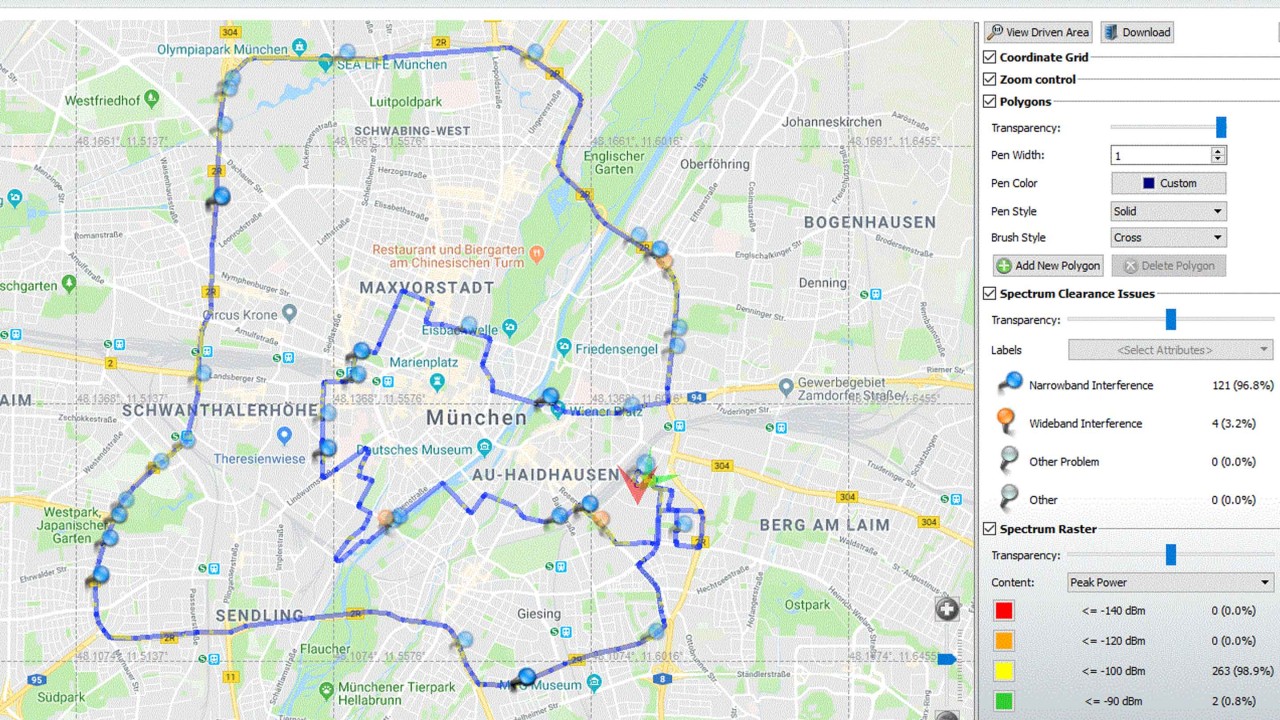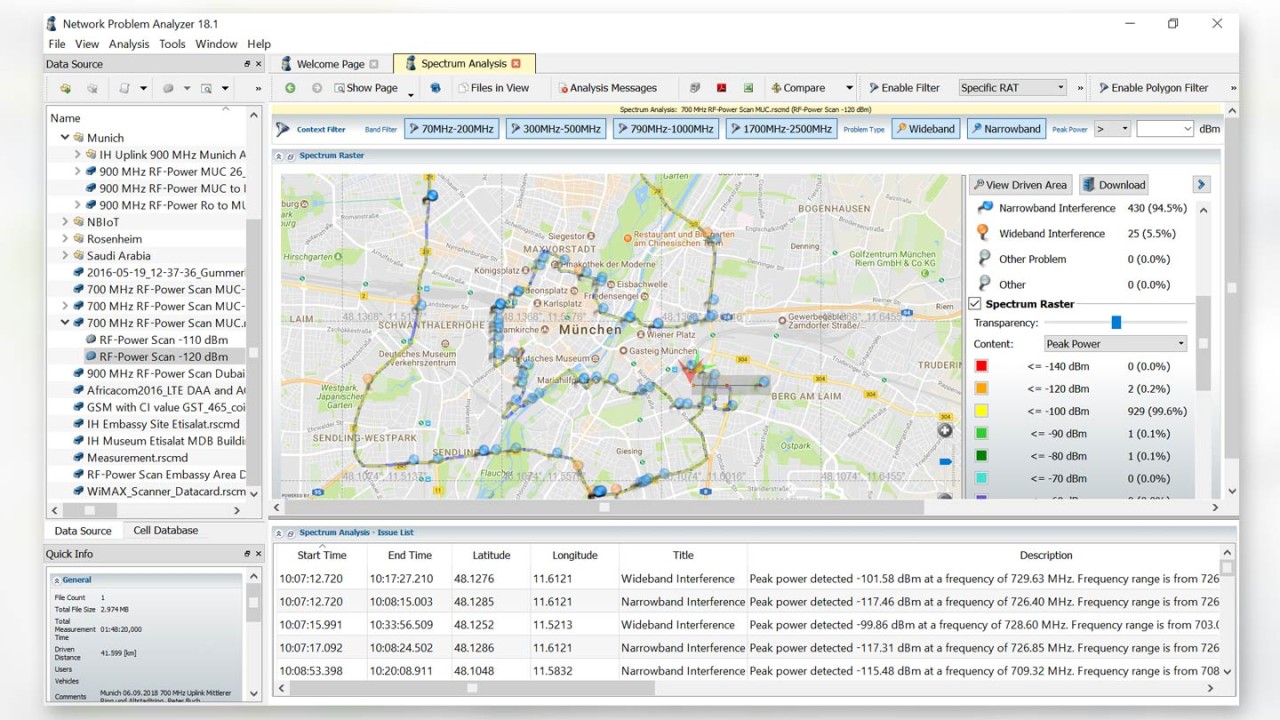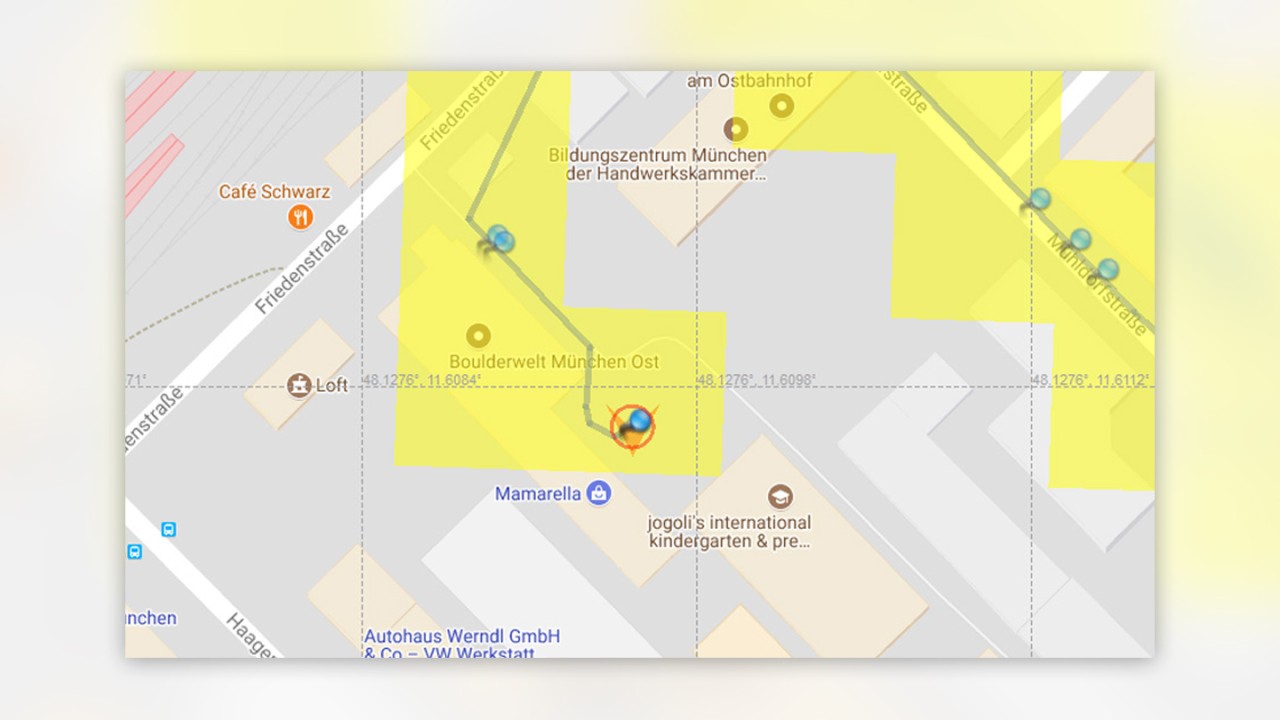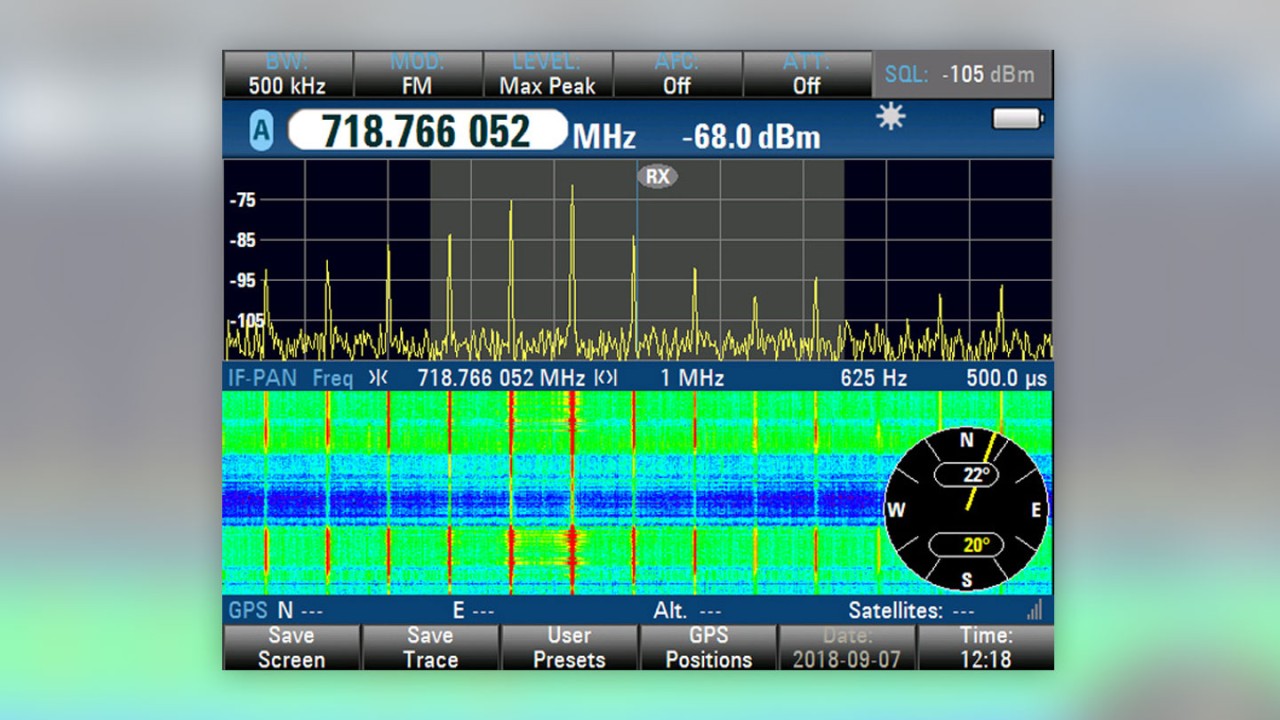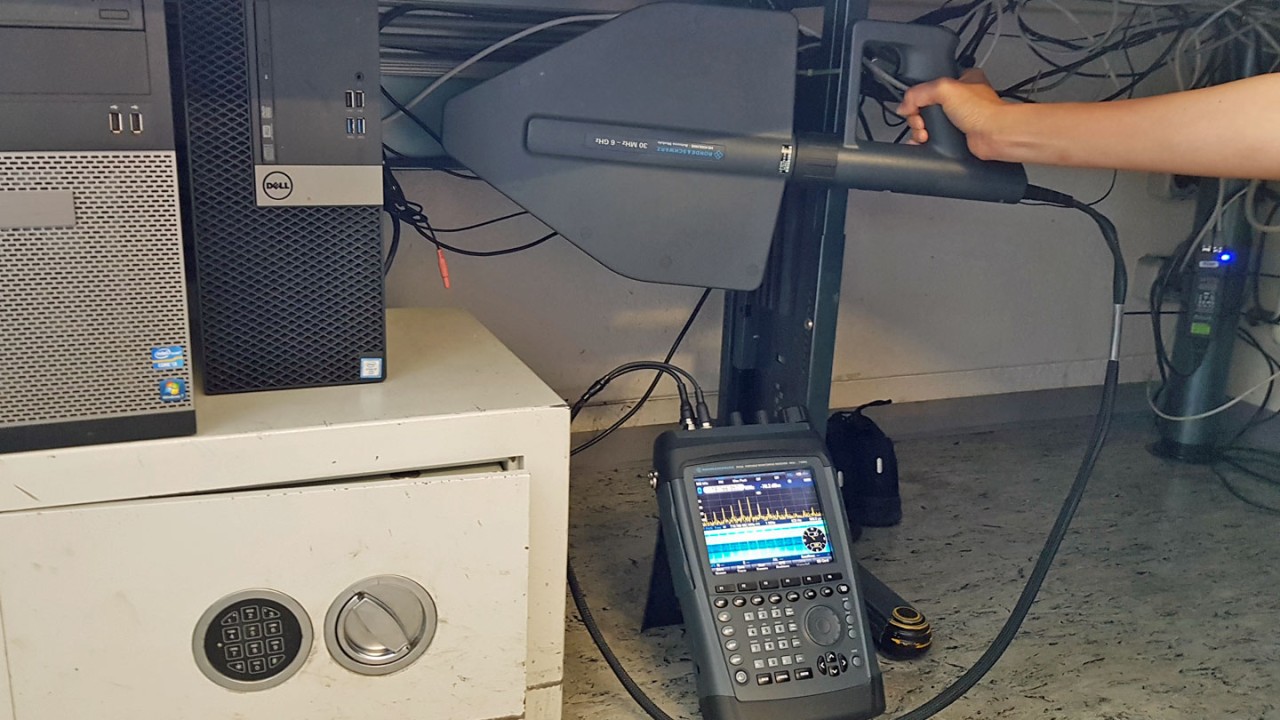Written by Peter Busch | February 6, 2019
Traditionally, RF interference hunting means that you get a list of sites with bad performance, according to the operations support system (OSS). The sites on the list define the areas for interference hunting. Next, you send a dedicated interference hunting team to the specific site sectors to start hunting.
One of the main factors delaying the interference hunting process includes overlapping signals. The trouble is, once you switch your new network on, external interference signals overlap with your network’s signals. This situation leads to the idea of clearing the spectrum before the network is being rolled out to prevent masking by your network’s signals.
However, this idea creates a new challenge: Until you have deployed a network, there is no OSS and, of course, no list of sites with bad performance. Therefore, interference hunting has to be done in the entire network area. The area, however, could concern cities or even countries. An error-prone task when using traditional spectrum analyzers and portable receivers, not to mention the significant amount of time, budget and resources this would entail.
Faster RF interference hunting
A more automated solution for larger areas helps to reduce the number of working hours to a manageable level. The Rohde & Schwarz TSMx network scanner family (R&S®TSME, R&S®TSMA and R&S®TSMW) plus the network problem analyzer (NPA) feature in the R&S®ROMES4 drive test software comprise such a solution.
The scanner combined with NPA lets you perform a fast drive test with a fleet of cars and collect spectrum data from your complete network area in next to no time. Back at the office, the NPA feature in R&S®ROMES4 tells you where to send a dedicated interference hunting team with a spectrum analyzer or receiver to track down the source of interference.
Step 1 collecting spectrum data: Drive with the scanner and R&S®ROMES4, using the RF power scan to measure the spectrum on a given frequency range. You can use any number of cars, depending on how fast you want to be and the size of the area identified for interference hunting.
Step 2 post-processing spectrum data: For post-processing, use the network problem analyzer (NPA) with the R&S®ROMES4N18 spectrum analysis module to automatically detect interference in the bands that should be empty; since the network has not been rolled out yet. After you have configured the settings (bandwidth, duration, power, etc.), the analysis algorithm finds potential narrowband and wideband interferers and lists them with geolocation, level and frequency.
Step 3 start interference hunting with a receiver and a directional antenna to find the source quickly: With the list of interfering signals at hand, the interference hunting team’s task is set. They can start closing in on the source of inference and identify the device causing the problem.
Read the Application Card “Automated spectrum clearance in LTE and 5G mobile networks” to learn more about RF interference hunting and spectrum clearance in view of 5G NR.






